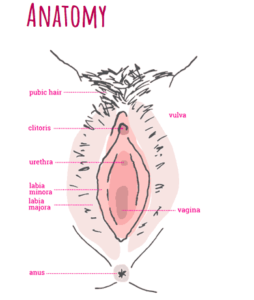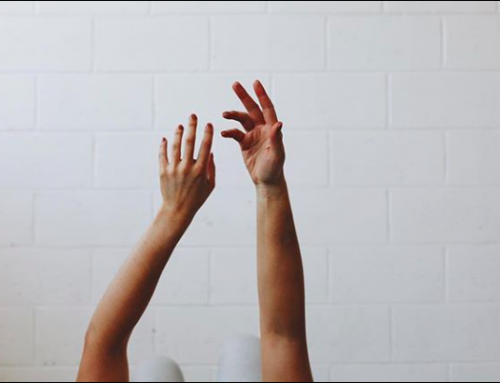**This article will discuss body image and eating disorders. This may be a triggering topic for some readers. Cottons hope that, if you choose to read this, you are feeling safe, supported and comfortable with the issues discussed. If not, that’s ok too! The Butterfly foundation, Beyond Blue and Life Line are great resources for information and support if you need to talk.
“Body image is the perception that a person has of their physical self and the thoughts and feelings that result from that perception” – The Butterfly Foundation.
Anyone equipped with a smart phone is exposed to information and imagery that at times is not always correct. Assessing what we are seeing critically, and understanding fact from filter is challenging when the knowledge that we already have may not be accurate. Therefore, an untruthful and negative view can result in phenomenon’s like Snapchat Dysmorphia and Orthorexia.

When we talk about body image issues there is a misconception that this is something you might grow out of as an adult. Body image issues, although heavily addressed in the adolescent years, do affect adults and that is completely normal. So ‘grown-ups’, we’re challenging this misconception and ensuring strategies and resources are accessible for you too.
Dr Gemma Sharp is a research fellow and clinical psychologist. She specialises in the broad area of body image including eating disorders and body dysmorphic disorder. Her initial focus on female genital body image, and the rising requests for cosmetic genital surgery, is a topic that she continues to research. This is an issue we at Cottons know is important and should not be kept in the dark. We had a chat to Gemma about her work and how our readers can start to tackle these subjects.
C: It may seem like the obvious question; how has social media influenced eating disorders?
GS: “There is a growing body of research that shows social media has a negative impact on body image and can lead to disordered eating. What I find most concerning and rampant on social media is what we are terming Orthorexia (clean eating). Not eating a meal unless it’s Instagram worthy.
The landscape of eating disorders has somewhat changed to “you must exercise a certain amount every day to have ripped abs and your body is a temple that can only ever have perfectly nutritious food”.
Although social media pages are monitored and taken down for delivering harmful information, there are influences that are telling people what to eat under the guise of “health”. These pages look appealing and healthy and this is what Gemma describes is grey area. GS: “feeling guilt about eating a biscuit because it is considered a ‘bad’ food is a problem area. We need to shift away from categorising food as either ‘good’ or ‘bad’. Food in all its forms is fuel for our bodies – it not inherently bad”
C: But, what on earth is Snapchat Dysmorphia? It seems like such a new concept in the era of social media apps.
GS: “We know that face tune apps that are being used are doing the photo editing that used to be done on celebrity images in magazines. Social media being so pervasive and well used is having an impact on how young people are viewing their body image and it’s one of the top ranked concerns for young people in Australia. What we are seeing in the outcome are things like eating disorders, body dysmorphic disorder and a rise in cosmetic surgeries or procedures in younger people which we weren’t seeing before.”
Dr Sharp began her work specialising in Female genital body image dissatisfaction focusing on one of the highest sought- after cosmetic procedures; Labiaplasty.

Image 1 The Labia Library
A labiaplasty is performed to reduce the size of the inner lips of the vagina. Turning an “outie vagina into an innie vagina” – Dr Gemma Sharp 2018. The labia minora and labia majora are important in protecting the vagina and urethra, provide lubrication and sensation. Alarmingly, this risky procedure is being requested by people as young as 14 when they are still going through puberty.
So, what is normal? Anatomically speaking, no labia looks the same and there is no one way the labia should look. As our body grows, our labia may grow too. What that looks like is entirely personal to your body.
However, it’s not just labia dissatisfaction. There has also been a rise in the request for cosmetic penile augmentation. In popular culture it is joked and falsely rumoured that masculinity is relative to the size of a penis. The larger the penis the more masculine and better sexual partner the person is. Like young girls, more and more young males are influenced by unrealistic imagery online and on social media platforms that suggest this.
Some great resources Gemma recommends; websites like The Labia Library and one we found The Labia Project all have great information and imagery of different Labias. To some people pictures can be confronting. However, if this is an issue that is concerning you or someone you know; the facts are worth knowing and seeing before embarking on a cosmetic procedure with high risks of infection and loss of sensation.
So where do we start by changing this damaging idea that there are perfect genitalia? Gemma suggests that the conversation about our anatomy specifically, can happen in early childhood
GS: “You start asking questions at quite a young age; around 3 years old we start to notice the different genders, including intersex. So why not start using the right terms straight away. Boys have a penis and a scrotum and girls have a vulva and a vagina. Little kids won’t bat an eyelid.”
The tougher and more daunting conversation may be with the teenagers and adults who feel shy or embarrassed. We try to beat around the bush (pun intended) when it comes to sex talk. Dr Sharp agrees that this conversation isn’t so easy:
GS: “it’s a bit tricky by the time you are a teenager, because you will have had other influences; and you might as a parent or an adult not have as much sway as a teen’s peers. It’s talking to teenagers about being critical of what they’re seeing online. You know that they are accessing it and they are learning from it. Saying “you know that some of this stuff is airbrushed” “it’s not how it is in real life” open up a dialogue that way and be quite gentle. Real life and online life can differ radically, so don’t believe in everything that you are seeing. You can also tell them to ‘trust their gut’ in that if what they are seeing online makes them uncomfortable or negative about themselves, they should listen to that feeling and maybe change up what they view.”
Addressing such a broad topic like body image can seem confronting, uncomfortable and daunting. But we think that it is worth the conversation. At Cottons we are helping Dr Sharp to continue her work by sponsoring her research and development of ways to bring media literacy into the social media battle ground. We are passionate about normalising our bodies and celebrating their diversity because we believe that there is no shame in the way we look.
If you’re after more information we have some resources for you
You can follow Dr Sharp and her fantastic work on twitter
The Butterfly Foundation – Support for those experiencing an eating disorder.
https://thebutterflyfoundation.org.au/
Headspace – National youth mental health foundation
Beyond Blue – Support for anxiety, depression and mental health
https://www.beyondblue.org.au/
This TEDx Talk in Brisbane Delivered by Dr Gemma Sharp addresses genital cosmetic surgery
https://www.youtube.com/watch?v=OOhgwjEnfAA
RadioTherapy RRR with Dr Gemma Sharp – discussions on penile augmentation and sexting
https://www.rrr.org.au/explore/programs/radiotherapy
The Labia Library – Images and information the Labia
http://www.labialibrary.org.au
The Labia Project – “a safe, supportive and accepting community, where women with diverse body types and labia are able to share their insecurities, ask questions and share pictures of themselves anonymously with the community”





Leave A Comment